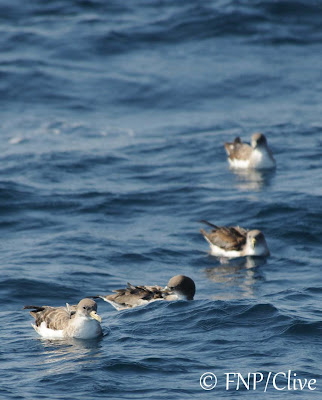This is the time of year when flying fish are passing through the Strait of Gibraltar. They attract many predators that chase them and catch them below or above the surface of the water. These concentrations provide a unique opportunity to see large concentrations of marine predators. Last Sunday we were able to experience this amazing event. See our blog of 20 September, 2010, for a similar event.
Last year we found them in the Mediterranean, east of Gibraltar, but this time they were in the Strait within view of the mist-covered and imposing Rock. Below are some scenes from this magical event...
Leading the underwater action were Common and Striped Dolphins
On the surface, the main predator was Cory's Shearwater
They wait patiently, and peacefully, in rafts until, that is, the dolphins bring the fish to the surface. Then the squabbling commences!
Just like the smaller vultures at a carcass, the Balearic Shearwaters (below) operate on the fringe as they wait for scraps
Gannets arriving from the Atlantic to winter also join in. Most are juveniles or immatures. There are very few adults right now, most will arrive in October.
These past weeks have been very busy for us in the field, so we need to catch up with a number of stories. So keep visiting our blog!

















































